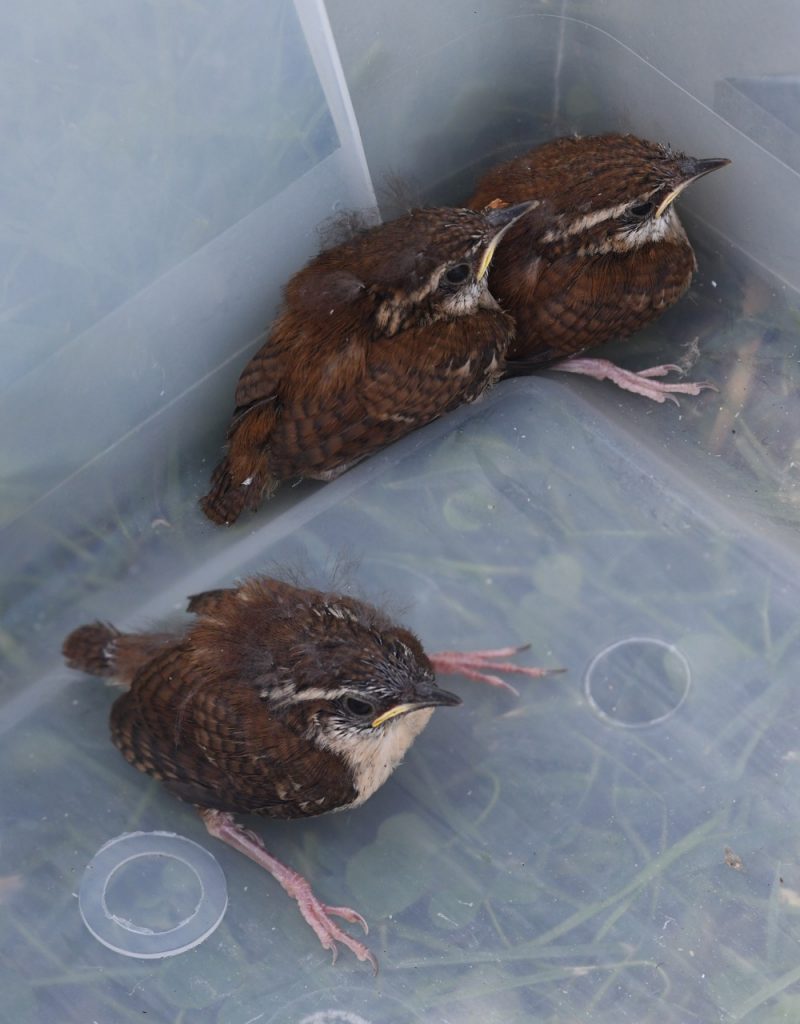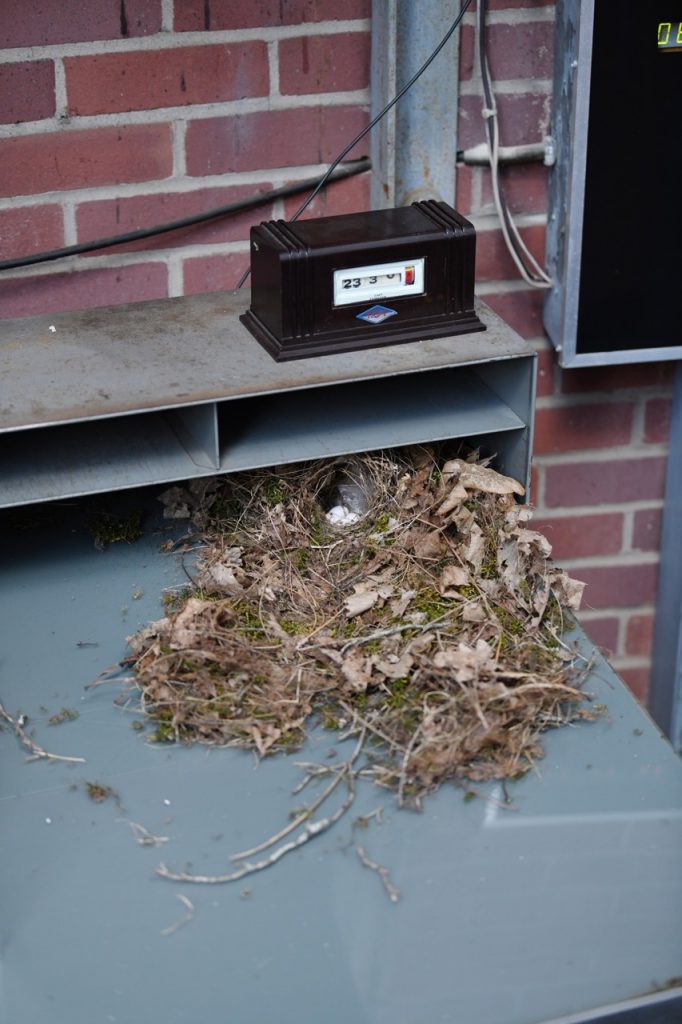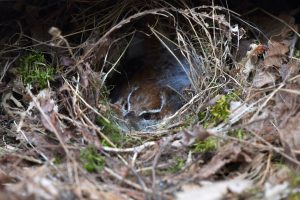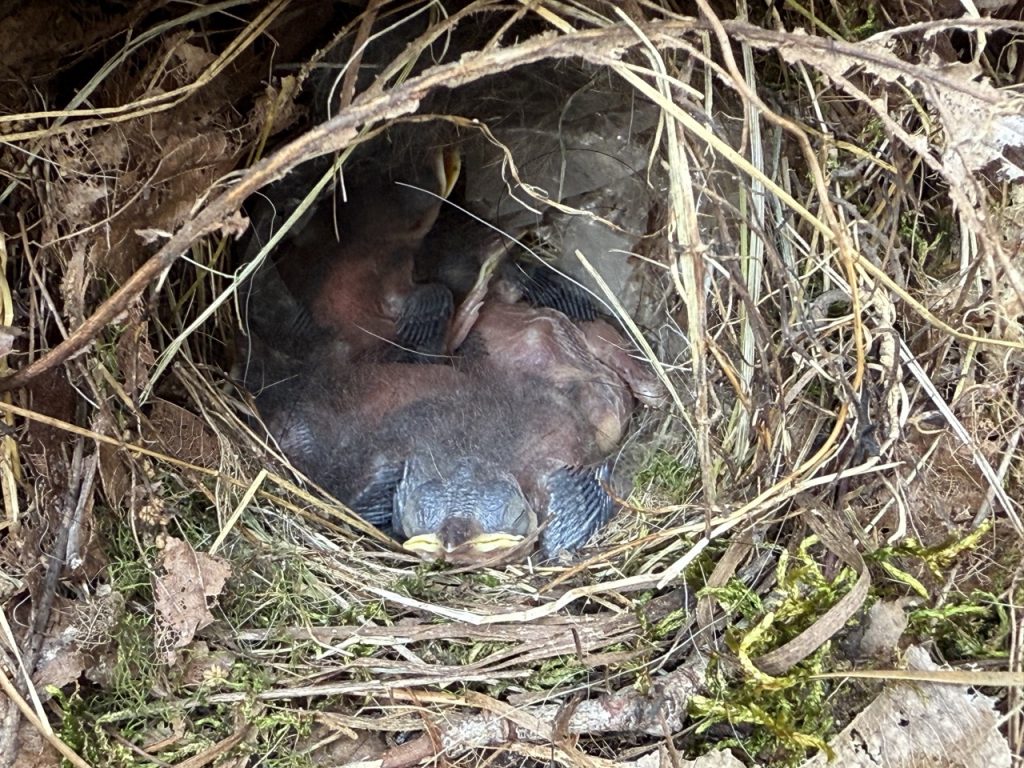

If you have been to Dyer Observatory, you are well aware of how scenic the hilltop is. Even after having been here for nearly two decades, I still find it hard to believe that bustling downtown Nashville is just eight miles to our north. Our parklike setting is home to a wide array of flora and fauna, and one aspect visitors might not think about is how nature also tries to make the observatory itself a home. Most years, the big white dome that houses Dyer’s 24” Seyfert Telescope ends up serving as a nesting site for families of Carolina wrens. These very vocal songbirds are surprising loud for their size, and they also boast with them a formidable sense of curiosity that usually begs the question, “Can I make a nest in this spot?” When I first started as a graduate student helper in 2006, a Carolina wren would often build a nest on the platform that housed the motor used for opening and closing the big doors on the telescope dome. A particularly dangerous location because of the rapidly spinning belt, we would use the lift platform to move the nest down to a lower, less perilous location at the bottom of the dome, and it would take the wrens just a few minutes to figure out the new setup.

It seems that subsequent wren generations took note. For nearly a decade, a Carolina wren has now opted for a covey hole on the dome’s tool cabinet as the choice nesting location. This is still not a convenient spot, and staff try to deter nesting by removing bits of twigs, leaves, moss, and more as soon as they appear; however, these little creatures are remarkably fast and can complete a nest in just a couple of days. At that point, especially if an egg is found, the wren has won. Public events mean visitors in the dome near the nest. To help out, observatory staff mount barricades around the nest to protect it from accidental damage or curious fingers of visitors. Once the event is over and the dome is shut, staff leave on a single light in the dome so the female can make her way back to the nest even in the dark. How does she get inside in the first place? A Carolina wren only needs a gap about 1.2 inches (3cm) in diameter to enter, and there are plenty of gaps around the observatory dome doors that can easily accommodate.

Carolina wrens usually have anywhere from 3-6 eggs and take about two weeks to incubate them. Once hatched, the young fledge in about another two weeks. As this point in their development, the fledglings may be able to glide or fly level decently fast, but they are not yet able to get really good lift to fly substantially high. As a result, they are unable to escape the dome. Not to worry, though! When they are getting near this point, observatory staff check daily for an empty nest, at which point the chase begins to round them up in a container and transport them outside. This year, Dyer’s Carolina wren pair fledged two broods, with the second brood fledging during one of the SAVY camp days at Dyer (featured image at top). Not only were they introduced to the wonders of the cosmos, the SAVY camp students got to experience a bit of zoology up close as the fledglings were released into a nearby bush. In another eight months or so, we will start the process over again.
